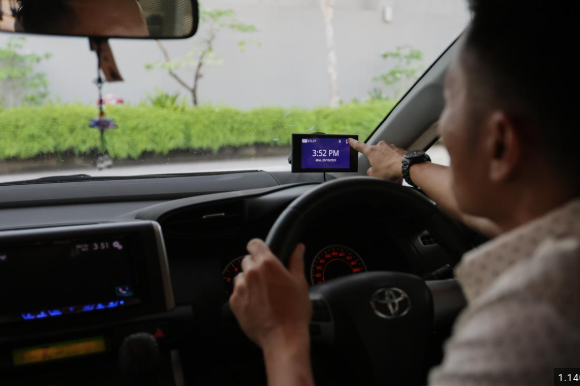The upcoming ERP 2.0 system is receiving mixed reactions from motorists, even as installation begins for fleet vehicles.
The Land Transport Authority (LTA) of Singapore is set to begin fitting vehicles with on-board units (OBUs) for the next-generation ERP 2.0 system, starting with fleet vehicles in November 2024. This move is part of the country’s transition to a satellite-based Electronic Road Pricing system, which will eventually be rolled out to privately owned vehicles in batches, completing the installation by the end of 2025.
The OBU is a three-piece unit, consisting of an antenna, a processing unit, and a touchscreen display. The LTA has made it clear that the units will be provided free of charge to motorists during the installation period. However, despite this initiative, many motorists have expressed reservations, and car dealerships are preparing to manage the transition.
Authorized car distributors such as Rolls-Royce Motor Cars Singapore and Komoco Motors are working with the LTA to ensure that the OBUs are installed correctly and discreetly in vehicles. Ms. Renee Chua, Managing Director of Rolls-Royce Singapore, mentioned that her company had been working with the LTA since 2020 to determine where the components would fit in vehicles. She highlighted that customers purchasing new cars will be able to choose whether to have the touchscreen display installed, with new vehicles slated to come with the OBU from the first quarter of 2024.
However, motorists are not as eager. Some, like Jeremy Ng, a 46-year-old from a private bank, expressed concerns about the OBU’s bulky design and potential discomfort, especially the processing unit, which will be placed on the side of the front passenger footwell. Ng questioned the necessity of having a physical device when EZ-Link, a contactless payment provider, already offers a mobile app for similar functions.
Others, like Kelvin Tan, a salesperson, criticized the OBU as a backward step, stating that smartphone-based systems would be more convenient. However, the LTA has explained that such a system would not offer the security and functionality that ERP 2.0 is designed to deliver. Xavier Wong, a venture capitalist, also shared his preference for a more compact unit in future iterations, citing the potential for future upgrades.
On the other hand, some drivers, like Klive Lee, a 54-year-old advertising agency owner, have no concerns about the OBU installation. The LTA conducted a pilot exercise fitting 500 vehicles with the OBU, including cars, motorcycles, and trucks from Certis Cisco, to assess the process. The feedback from Certis Cisco drivers revealed that the OBU’s reminders about bus lanes and speed cameras were particularly useful, and the installation process was smooth, despite the complexity of the three-piece unit.
Looking ahead, the LTA is planning to expand its distance-based charging capability with the new ERP system, but there are no immediate plans to introduce it. Some motorists, like Klive Lee, hope that distance-based charging will come into effect soon, believing that it would make sense for drivers to pay based on the distance traveled.
While the ERP 2.0 system represents a major technological leap forward, its implementation is still met with mixed feelings from both the public and the automotive industry.


